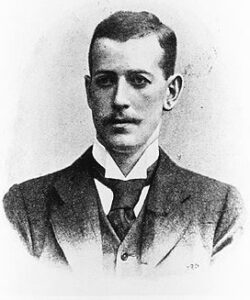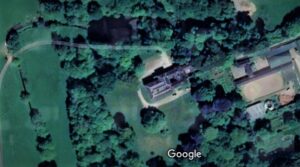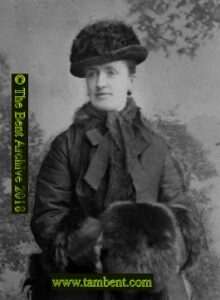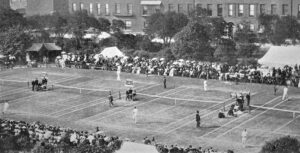
The Irish are grand on court, always have been, ever since lawn tennis took off within the Emerald Isle in the late 19th century (think John McEnroe, eligible to have played Davis Cup for Ireland, were he that way inclined, with grandparents from Co Westmeath and Co Cavan – a decent forehand away only from Co Meath and Mabel Bent’s place of birth in 1847).
Limerick Lawn Tennis Club (“There was a young man called Dennis / who took on Hall-Dare at tennis / who can forget / his dash to the net / and subsequent trip to the dentist.”), proudly staged the first Open championships in Ireland in August 1877, coincidentally, or not, the same year as the first Wimbledon. Simon Eaves and Robert Lake (2020) paint a rosy picture of the sport’s acme (and a decline a little later): “For a time in the 1880s and early 1890s, lawn tennis in Ireland was at its peak, and a leading nation in the sport, globally. Its players were among the world’s best, the only rival to its national championships in terms of prestige and quality of entries was Wimbledon, and its coaching professionals ranked among the world’s most sought after.”

Tennis was also one of the limited number of sporting events selected for the first modern Olympics held in Athens, Greece, from 6th – 15th April, 1896, and, as chance, or not, would have it, the men’s singles was won by Dublin-born John Boland. Of course, the Bents were in Athens at the time; they attended the first day of the Games only – the tennis started a few days later.
The game was an immediate hit with Mabel’s family, the Hall-Dares, who installed grass courts on the lawns of their estate near Bunclody, Co Wexford. Among the several sports and pastimes mentioned in Mabel’s travel diaries, colonial tennis (biking was another interest) never failed to excite her, and one reference may stand for them all:
“We did not do much that day, but about 4 sat out in wintry wind to watch the tennis [Theodore and Mabel are in Bushire in the Persian Gulf]. There are 2 courts in earth [at] the Residency and a club, and they have a cricket club. With consuls, telegraph people, etc., there are about 20 Europeans. I asked one of the young ladies if she knew any Persian ladies. ‘No. I’ve never seen any. I never do like Natives.’ Once you get to Egypt anyone… is a Native – no one cares to discriminate of what country.” (1 February 1889, The Travel Chronicles of Mrs J. Theodore Bent, Vol. 3, Oxford, 2010)

Mabel and Theodore were again travelling a few years before, in August 1882, when Mabel’s sister-in-law Caroline Hall-Dare organised a spectacular tennis tournament within the grounds of the family home, Newtonbarry House, sleepy on the banks of the brown Slaney River. We have a reporter from the The Gorey Correspondent and Arklow Standard (Saturday, August 26, 1882) to thank for a white-flannel and parasol account of it all:
“On Wednesday, 16th inst., a Lawn Tennis Tournament was given by Mrs Hall-Dare, at Newtonbarry House, to the ardent players of the County Wexford, who all arrived on the ground at twelve o’clock, when the drawing for partners took place. This was admirably conducted by the Rev. Canon Blacker and Mr. P.C. Newton. The games began immediately after on eight of the courts which are situated so beautifully upon the even sward which faces the mansion. After the first rounds had been played the company assembled for luncheon. In the afternoon the numbers were swelled to nearly two hundred, who witnessed, with much interest, the final rounds of this exiting Tournament.”

There is nothing like keeping it in the family, and ultimately the mixed doubles winners were ‘Miss Hall Dare’ (possibly the eighteen-year-old Elizabeth Frances Hall-Dare, Caroline’s daughter, and thus one of Mabel’s nieces, but there are other candidates) and Mr R. Donovan, who beat Miss Boyd and Mr C. Donovan. There was a ‘Consolation Prize’ for those knocked out in round one, and the winners of this were Miss E. Newton and Major Knox Browne (later a distinguished soldier), who beat Caroline Hall-Dare and Mr E. Donovan (the Donovan family, perhaps of Ballymore Townland, Co Wexford, not far east of Newtonbarry, obviously also took their tennis very seriously. There is note of a Mr Richard Donovan apparently meeting his future wife at a Kilkenny tennis party).

Like us, you might think it rather a shame that the event’s organizer, host, and provider of courts, won nothing. Perhaps Caroline had yet to adjust to the 1880 changes to the tennis rules, when “the hand-stitched ball was replaced by the Ayres ball, the net was lowered to 4ft at the post. The service line was brought in a distance of 21 feet from the net. A service ball touching the net was deemed to be a let and a player was forbidden to volley until it had crossed the net.” No problem at all for John McEnroe of course.

Those interested in the history of Irish tennis will enjoy the three-volume study by Tom Higgins of Sligo Tennis Club. (This is mentioned really as a nod to Mabel Bent’s childhood home, Temple House, Sligo, although it is unlikely the house then had courts, in the 1850s.)
 Leave a comment or contact us about this article
Leave a comment or contact us about this article